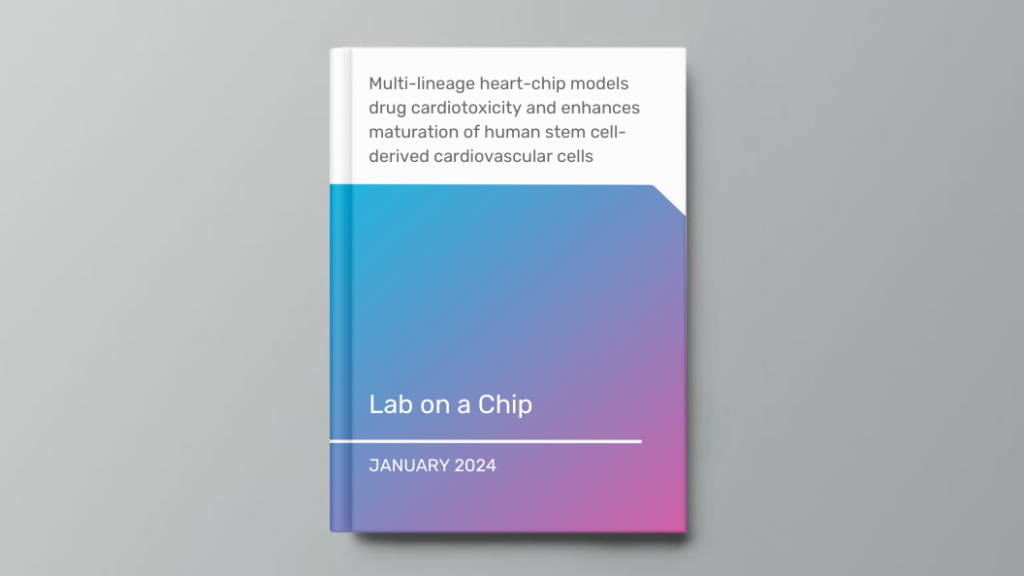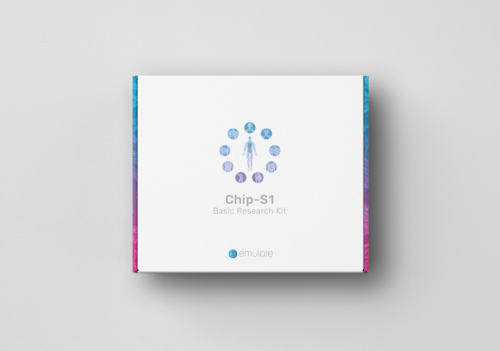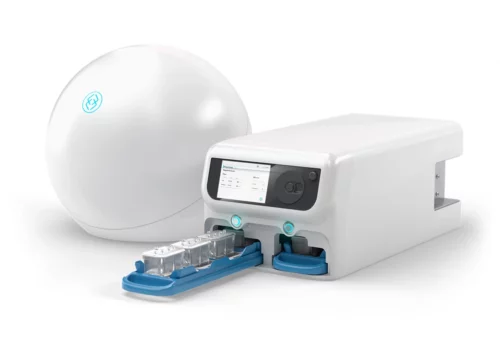Organ Model: Heart
Application: Toxicology
How Organ-Chips Were Used: Conventional models for cardiovascular drug toxicity using iPSCs lack complexity, dynamic culture conditions, and physiological relevance, resulting in immature cells. Mature cells and multi-lineage differentiation are needed for testing multi-lineage cardiotoxicities.
Here, users developed a multi-lineage cardiovascular Organ-Chip using hiPSC-ECs and hiPSC-CMs. Cells in the chip are subjected to active fluid flow and rhythmic biomechanical stretch, resulting in enhanced hiPSC-EC and hiPSC-CM functional and genetic maturity, modeling endothelial barrier permeability, and demonstrating long-term functional stability.
They also showed the utility of this model as a predictive platform for evaluating multi-lineage drug toxicity, such as cancer therapy-induced cardiotoxicity.



